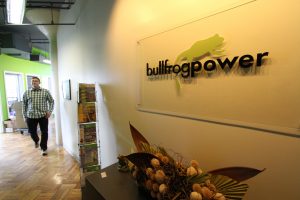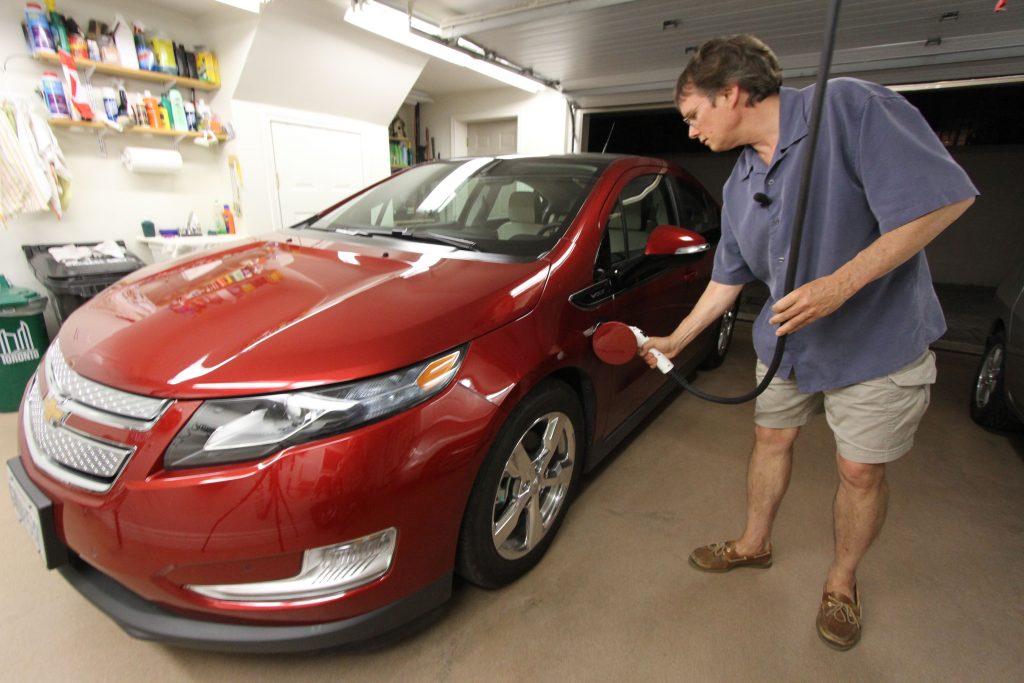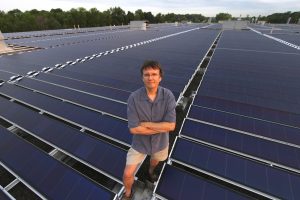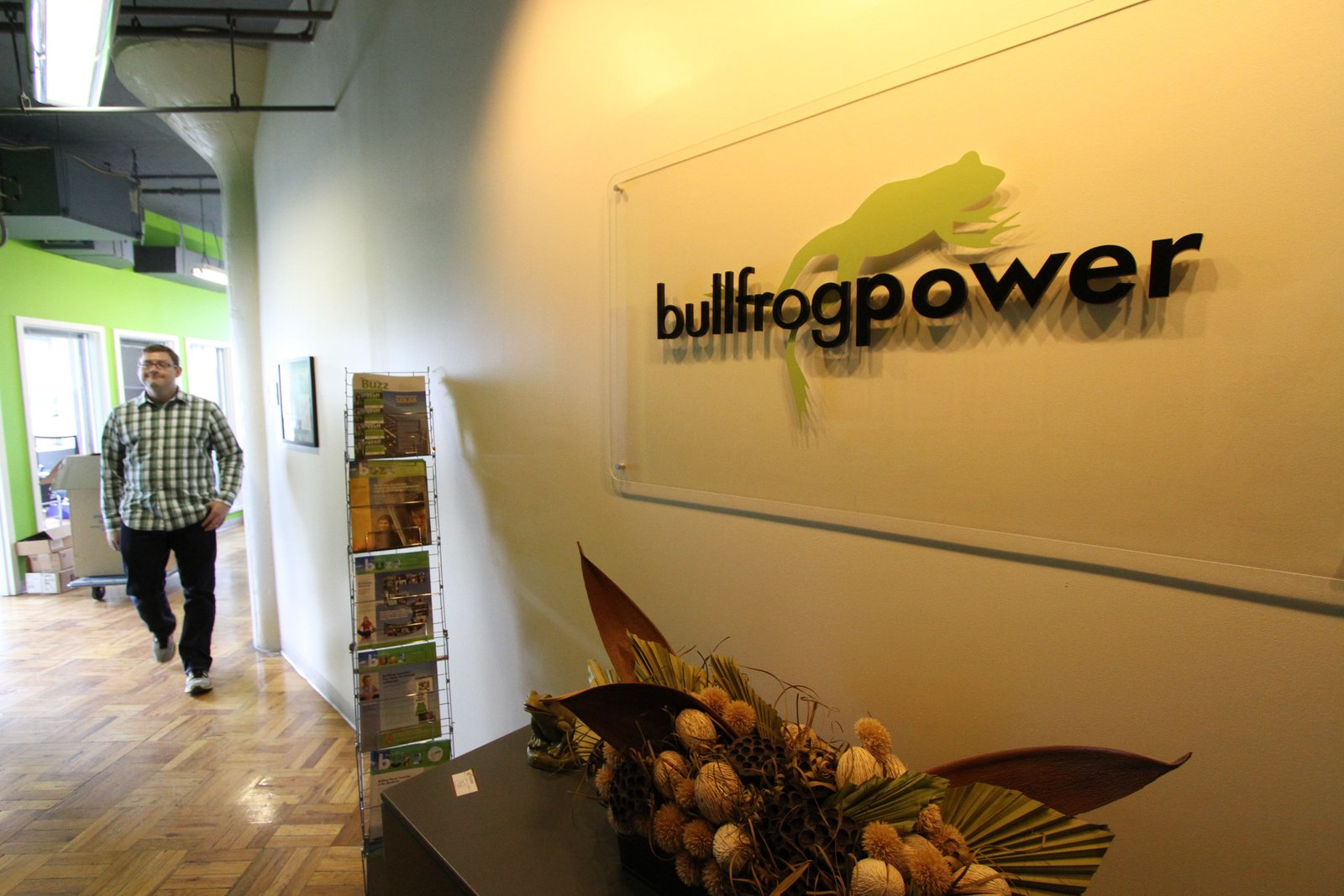By David Dodge and Duncan Kinney
Wendell Berry once famously wrote that eating is an agricultural act. It was a radically simple way to reframe the impact of industrial agricultural practices on the environment.
In that vein the flick of a light switch is an electrical act (credit to CleanTechnica for the analogy). With a simple, habitual act you’re enabling a sprawling, centralized, hub and spoke electricity system that emits 13 per cent of all of the GHG emissions in Canada.
And if you’ve ever displayed a hint of curiosity about renewable energy you’ve no doubt heard about Bullfrog Power. The renewable energy provider is everywhere – on Frisbees and keychains, in your Facebook stream and at multiple events.
However a question we’ve run into from time to time is a simple one – is Bullfrog Power for real? Their grassroots ubiquity in the renewable energy movement meant that people were familiar with the brand, but maybe not as familiar with their business model.
Ribbit

Bullfrog Power offices in Toronto
When you sign up to Bullfrog Power they inject renewable electricity into the energy system where you live that matches the amount of electricity you purchase for your home or business.
The renewable electricity that is injected into the grid on their customers behalf comes from EcoLogo certified sources and to ensure that it’s only counted once and that it’s meeting the energy demands of its customers they get a yearly audit from accounting firm Deloitte.
When you think about it’s a pretty esoteric idea. As a commodity, electricity is almost unmarketable and most people spend little time considering where their electricity comes from and its environmental consequences. We flip the switch and it’s just there.
Andrew Heintzman is the brother of Tom Heintzman, the president of Bullfrog Power. In his book The New Entrepreneurs he talks about the genesis of Bullfrog.
“The environment was a completely unbranded space. Brands will be necessary to cut through the confusion of competing environmental claims, and there was an opportunity to create the ‘Nike of the environment.”
They knew they had to create a powerful brand that was authentic and would connect with its audience so Bullfrog hired highly acclaimed Bruce Mau Design to develop their look and strategy. Since their inception in 2005 Bullfrog has become a national brand. Bullfrog is, at its heart, a marketing company. They’re selling the idea that clean, renewable energy has more value than the energy that comes from dirty, polluting, GHG emitting power plants.

Bear Mountain Wind Farm not only has its green electricity certificates bought by Bullfrog Power but the Peace Energy Cooperative, which helped develop the project, also received funding early on from Bullfrog Power. Photo Courtesy of Don Pettit, Peace PhotoGraphics Inc.
The Bullfrog business model and beyond
Of course no company is without its critics. The idea of being the “Nike” of the environmental space surely sends the blood pressure of a certain sector of the environmental movement soaring considering Nike’s past with sweatshops and overseas labour issues.
But regardless of the analogy used to describe the company when it was getting started it is a privately held corporation with a very smooth marketing machine. That is always going to rub some people the wrong way. However that’s part of the reason for its success as well. After all Bullfrog needed to find a way to get people to pay more for environmentally friendly electricity on top of their existing electricity bill. That’s no small feat.
The way it works is pretty simple. At the Bullfrog website you select the type and size of home you live in and Bullfrog estimates your power usage and then charges for and ensures the equivalent amount of green electricity is injected to the grid in the region where you live.
You can do this more accurately by providing Bullfrog with copies of your utility bills, but the onus is on you to purchase enough green power to cover your usage. This does allow some homeowners to potentially buy less than they use and then claim their home is powered 100 per cent by green energy.
But the success here is in the overall impact. It’s about supporting renewable energy and when you start looking at their record you can start to see the good work they’ve done for the renewable energy sector (check page 21 of the Bullfrog Progress Report).
Projects getting built
Glen Estill is a former owner of Sky Generation who says a Bullfrog contract “enables companies to get financing to build a project.”
Estill says Bullfrog bought two thirds of the output of the Ferndale project which made the project viable.
Bullfrog has supported 45 renewable power projects across Canada by purchasing some or all of the electricity they produce. This past year they bought about 500,000 megawatt hours of green electricity from their sources on behalf of their customer base of about 8,000 residences and 1,500 businesses.
Without purchasing this power at the premium they do these renewable energy projects would struggle to remain profitable and might have even been built in the first place.
- Bear Mountain Wind Park — B.C.
- Blue Trail Wind Farm — Alberta
- Castle River Wind Farm — Alberta
- Cowley North and Sinnott Wind Plants — Alberta
- Dufferin Run-of-River Facility — Quebec
- Ferndale Wind Farm — Ontario
- Magpie Run-of-River Facility — Quebec
- Oldman River Wind Farm — Alberta
- Providence Bay Wind Farm — Ontario
- Ravenswood Wind Farm — Ontario
- West Cape Wind Farm — Prince Edward Island
Energy as an ingredient
In eight years of Bullfrog has racked up 1,500 business customers, the most significant of which is Unilever.
“They’re purchasing 100 per cent green electricity for all of their facilities in Canada – all of their offices and their manufacturing facilities,” says VP of operations at Bullfrog, Ron Seftel.
Unilever puts Bullfrog’s logo on the packaging of major products such as Breyers ice cream and Klondike bars. And another commercial client Mondelēz even puts the little frog logo on Dad’s cookies. “This brings that discussion to the dinner table so that people understand that energy is component that goes into every product,” says Seftel.
Energy as an ingredient in everything we buy – it’s an intriguing idea. This labeling promotes energy literacy and Bullfrog power at the same time.
Green power for your Chevy Volt

Mike Brigham of Solar Share plugs in Bullfrog Powered Chevy Volt. Brigham is also the president of Solarshare, a solar electricity cooperative that got help early on from Bullfrog Power. Photo David Dodge, Green Energy Futures
As we’ve learned in Green Energy Futures electric vehicles reduce emissions and fuel cost, but where does your electricity come from for the electric vehicle?
Bullfrog power may have known about the California study that found that 39 per cent of plug-in vehicle owners also have solar photovoltaic systems. So Bullfrog cut a deal with General Motors to offer the Bullfrog Powered Chevy Volt.
You get the badge on the back of the car that says Bullfrog Power Edition and with this package you will have paid for two years of the renewable electricity required to power the average use of a Chevy Volt.
Community Power
While selling green power to homes and businesses is their core business, their work on funding smaller projects is something that has gone a littler under the radar. They’ve provided funding either through grants, debt or equity investments in the following projects or groups
-

Mike Brigham, president of SolarShare
Proof Line Wind Farm – Ontario
- Peace Energy Cooperative – BC (Which we did an episode on)
- Solarshare Co-operative Solar Projects – Ontario (Ditto)
- Zooshare Co-operative Biomass Project – Ontario (not yet started construction)
- Xeni Gwet’in First Nations Solar Project – BC
- Oxley Wind Farm – Ontario
- Ottawa Renewable Energy Co-operative – Ontario
The program behind these investments is called Bullfrog Builds and will get a formal launch later this year.
“It’s a renewable accelerator and what we’re trying to do is to support early stage projects. Finding gaps in their funding throughout the project. Not providing an agreement at the end to buy that power but maybe it’s a grant at the early stage to do an environmental assessment, maybe it’s some working capital so that they can just get to the next step of the project.,” says Seftel.

Ron Seftel, VP of Bullfrog Power
According to Seftel they also have another 10-15 projects/initiatives in the pipeline that they should be able to announce by the end of the year.
These smaller, community and cooperative projects are key to building a health renewable energy eco-system.
“We also, obviously, buy from those larger projects, but it’s those community projects that get the local community engaged, gets individuals talking about it, supportive of the project and any project that has local support is going to be successful,” says Seftel.
And eight years in the Bullfrog experiment has worked out pretty well, they’ve gone national and picked up many corporate clients. But more importantly they’ve forced consumers to think about those everyday electrical acts and how they connect to the complex and massive system that ensures that the light turns on when they flick the switch.
Building a conscious, critical and conscientious electricity consumer is one of the building blocks you need to build a green energy future.

